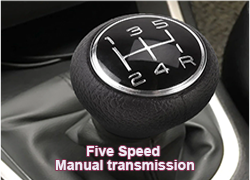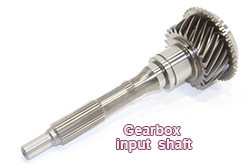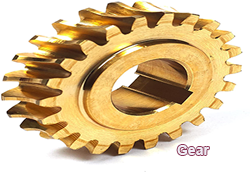
SECOND GEAR:  Describes the middle gear in a manual gearbox that has a faster ratio than low gear, but slower than high gear.
Describes the middle gear in a manual gearbox that has a faster ratio than low gear, but slower than high gear.
SELECTOR FORK: Describes a component of the selector mechanism in a manual gearbox, earning its titles as it is shaped like a two-pronged fork, that moves a sliding pinion forward or backwards along the selector rod.
SELECTOR LEVER: Describes an automatic transmission lever that allows the driver to adapt gear changing processes to particular driving conditions (slippery through selection a particular drive range.
SEMI-AUTOMATIC TRANSMISSION: Describes a transmission system in which the clutch is first disengaged and then automatically re-engaged when the driver shifts the gear lever.
SHIFT CABLES: Describes cables used to operates gears in certain transmission systems.
SHIFTER: Describes a handle used to change the gears in an automatic transmission system.
SHIFTER LINKAGE: Describes a system of rods and joints used to operate an automatic transmission system.
SHIFT FORKS: Describes the devices that straddles the slots cut in sliding gears, used to move the gear on the shaft.
SHIFT GATE: Describes the mechanism in a transmission linkage that controls the motion of the gearshift lever.
SHIFT INTERLOCK: Describes a device that prevents different shift forks in the transmission from being moved at the same time, through locking into inoperative shift fork mode as the other gear is being shifted.
SHIFT LEVER: Describes a device attached to the side of a steering column that allows the operator to change the gears of the transmission.
SYNCHROMESH: Describes a device fitted in a manual transmission that allows the gears to mesh more smoothly, preventing grinding and clashing of gears. Some transmission systems use synchromesh on all shifts while others synchronize second and high gearshifts.
SYNCHRONISER: Describes a sleeve that slides to and fro on the transmission main shaft allowing the gears to rotate at the same speed preventing clashes when the gears begin to mesh. A transmission fitted with synchronizers is known as a synchromesh transmission.
THREE SPEED: Describes a basic transmission system with just three forward gears.
THROTTLE VALVE: Describes a form of modulator valve found in an automatic transmission system actuated by the carburettor throttle. The throttle valve converts line pressure into an engine-load dependent pressure, which is then directed to various valves
TRANSFER PLATE: Describes a form of adapter plate found in the control valve assembly of an automatic transmission, that is used to direct the fluid flow between adjacent valve bodies
TRANSMISSION ADAPTER: Describes a unit that allows a different design or model transmission to be grafted to the original engine.
TRANSMISSION CONTROL MODULE(TCM): Describes an electronic automatic transmission control unit that computes data on the actual operating conditions of the vehicle in real time and generates corresponding signal pulses for the solenoid valves of the hydraulic control system.
TRANSMISSION CONTROL SYSTEM: Describes a hydraulically driven system that controls the changes of ratio in automatic transmissions in relation to the current engine load, vehicle speed, position of the selector lever and the shift mode button.
TRANSMISSION COVER: Describes a detachable part of a vehicle’s floorpan. usually located at the front end of the centre tunnel in cars whose engines are longitudinally mounted, providing improved access to the top of the transmission for maintenance purposes.
TRANSMISSION FLUID (ATF): Describes an extra thin oil used to fill the automatic transmission system allowing it run on hydraulic pressure. The same fluid is also used in certain designs of power-steering pumps.
TRANSMISSION HOUSING: Describes the outer shell housing the transmission gears.
TRANSMISSION INPUT SHAFT: Describes the shaft that transmits power from the clutch to the gearbox.
TRANSMISSION OUTPUT SHAFT: Describes the shaft that transmits power from the transmission system.
VARIABLE BELT TRANSMISSION: Describes a form of continuously variable transmission using rubber V-belts fixed on expanding-contracting pulleys originally developed by DAF and used on the Volvo 340.
VARIOMATIC TRANSMISSION: Describes a type of transmission system that utilises a combination of rubber belts and expanding pulleys to provide an infinitely variable belt drive.
WIDE-RANGE GEARING: Describes a type of gearing system where the step between the two chainrings is considerably greater than found in the majority of other systems.
WORM GEAR:  Describes a course, spiral shaped gear cut on a shaft used to drive another gear often through engaging the cross shaft by a tapered pin.
Describes a course, spiral shaped gear cut on a shaft used to drive another gear often through engaging the cross shaft by a tapered pin.
WORM WHEEL: Describes a type of gearwheel driven by a worm.


